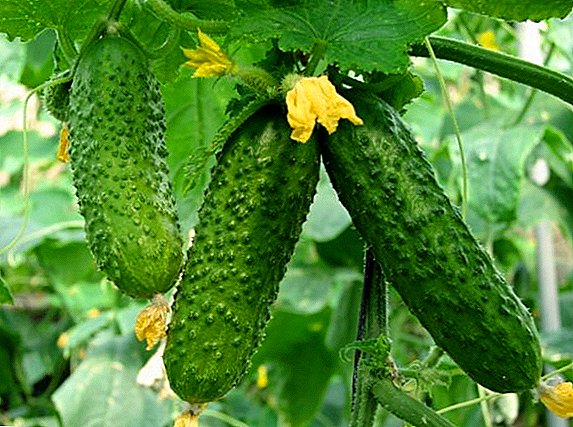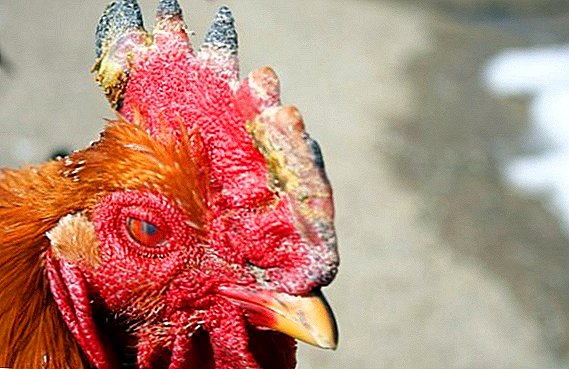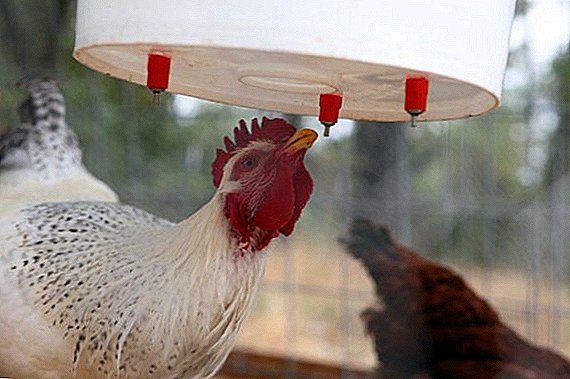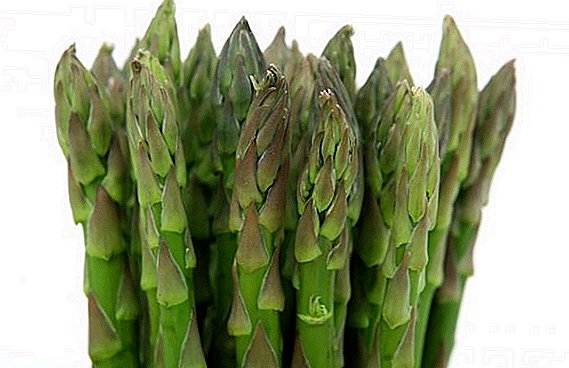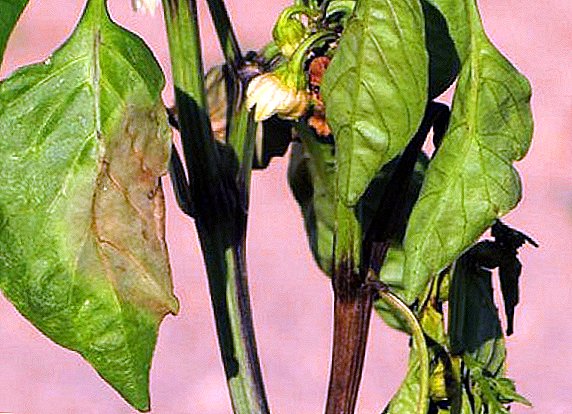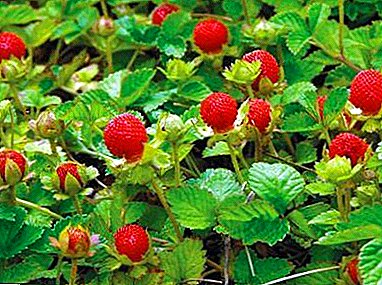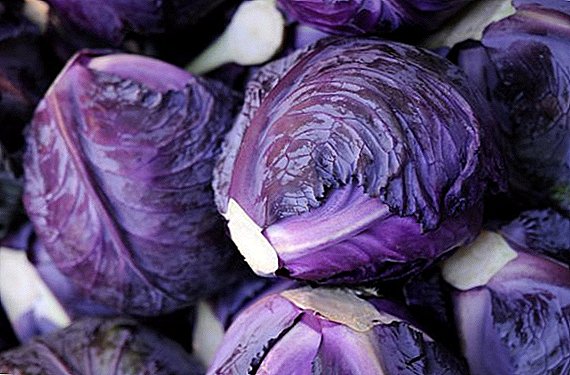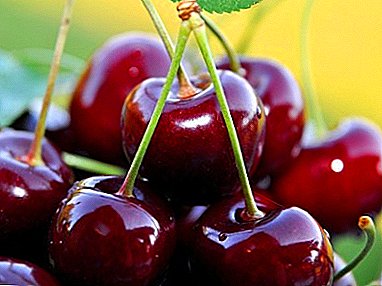
Heat-loving sweet cherry is good for its fresh and sweet taste, sour cherries make wonderful jam.
How to combine the features of these fruit crops from the Rosaceae family?
The answer was given by breeders, creating by interspecific crossing, cultivar - cherry-cherry hybrid.
Cherry, sweet cherry or hybrid?
 Initially, both cherry and sweet cherry had a common name - "bird cherry".
Initially, both cherry and sweet cherry had a common name - "bird cherry".
In the north of Europe, relying on the peculiarities of taste, these plants were classified as "sour cherries" and "sweet cherries".
There, in the 17th century a variety appeared "Mai-Dyuk" from random pollination of cherry cherries.
As a result of spontaneous crossing, the fruits turned out to be larger and sweeter than ordinary cherry, and led the gardeners involved in selection to work purposefully to create "Cherries". So there was a group of interspecific hybrids - dukes.
In our country, the first duke appeared in 1926 in the nursery of I.V. Michurin called "Consumer black".
At the end of the 20th century, breeders were already working on yielding and frost resistance, spreading them farther north. Besides managed to rid the new variety of the typical fungal disease of the cherry - coccominose.
True Dyuk samobesplodny, which requires the obligatory presence in the garden of a reliable pollinator - sweet cherries.
Reference: You can get a duk by grafting a sweet cherry on a cherry stock. However, such a hybrid takes root very difficult, it does not always begin to bear fruit, but if the two types of joining succeed, a high yield and high quality marketability of the fruit await the gardener.
Such high yields are shown by such varieties as Chernokorka, Black Large, Chocolate and Generous.
Variety description Toy
 In the State Registry of cherry-cherry hybrid was introduced in 1996 as a cherry Toy, created Institute of Irrigated Gardening of Ukraine. MF Sidorenko.
In the State Registry of cherry-cherry hybrid was introduced in 1996 as a cherry Toy, created Institute of Irrigated Gardening of Ukraine. MF Sidorenko.
Spread your variety found in the North Caucasus region, where cultivated as universal.
Cherry Toy - description of the "parents" of the variety:
- Cherry "Lyubskaya" - not having a specific author, but having received widespread since 1947 in central Russia; fruitfulness of a plant comes from the 3rd year and goes on increasing to 25 years; productivity reaches 12 kg of dark-red fruits from a tree; frost-resistant; tolerates long haul;
- Cherry "Solar ball" - a fruit tree of Melitopol breeding (Ukraine) comes into fruition also in the 3rd year; amazing productivity - 40 kg from a tree; fruit weight - 15 grams; frost resistance is high; resistant to typical diseases and pests.
The similarities and differences of cherries and cherries.
| Similarity | Differences |
| 1. A large assortment of species as a result of centuries of breeding. | 1.Cherry has wild ancestors; cherry - a product of hybridization. |
| 2. Grow in the territory of Russia. | 2. Cherry - everywhere, sweet cherry only in the southern regions. |
| 3. Both species can grow into a tree. | 3. There are bush varieties of cherries. Cherry has a stem stem. |
| 4. Flower samobesplodny or bisexual. | 4. The flower is represented: in the cherry by paired ovaries, in the cherry - by multiple bouquet inflorescences. |
| 5. Fruit in the form of berries with a stone. | 5. Berries differ in color: in cherry - all shades of red; the cherries range from white and yellow to red and black. The flesh of the cherry is juicier. Cherry berry is larger and more fleshy, with an easily separable bone. |
| 6. The stalks of fruit are long. | 6.By leaf shape. |
| 7. By the color of the bark. | 7. Roots horizontal orientation. |
| 8. Both plants are affected by gray mold. | 8. Disease typical for cherries - coccomycosis - not terrible for cherries. |
Further in the article you will see in the photo what a toy cherry looks like.
A photo
What does Toy cherry look like?



Features
Dyukovy cherry cherry variety got its name for the rare beauty of large fruits and is characterized by:
- cherry Toy is a vigorous variety in which a tree reaches 7 meters high;
- widely sprawled or oval shaped crown;
 gray, like cherry, bark on the trunk and skeletal branches, which flakes slightly;
gray, like cherry, bark on the trunk and skeletal branches, which flakes slightly;- shoots, thick and even, brown color;
- dark green leaves of solid size and ovoid shape; the end of the leaf is pointed and bent, and the leaf plate is slightly concave along the central vein;
- the serrated edge and thick root complete the impression of the leaf;
- white samobesplodnye flowers that appear most often on the annual increase and are collected in the bouquet inflorescences (3-4 pieces);
- fruits in the form of large (up to 9 gr.) berries dark red: they have a thin skin and an easily detachable bone;
- the surface of the berry is smooth and shiny with a slight fruit funnel and a "abdominal" seam;
- juicy pulp, painted in rich dark red color;
- berry has sugar content - 10.9%, acids - 1.5% and therefore - a pronounced sweet-and-sour taste, estimated by the tasting scale in 4.6 points;
- universal purpose varieties: dessert and industrial raw materials for the production of wine and juice;
- beginning of fruiting grafted seedlings from the 3rd year;
- late ripening of fruits - by mid-August;
- high yields and increasing year by year;
- average yield of a 10-year-old tree - 45-50 kg;
 good drought tolerance;
good drought tolerance;- frost resistance for a tree within - 25 ° C (mainly cold buds and flowers are vulnerable to cold);
- resistance to fungal disease - significant for this culture.
Excellent resistance to fungal diseases demonstrate varieties Molodezhnaya, Morozovka, Nadezhda and Novella.
The peculiarity of the self-barrenness of a variety requires effective pollinators in the adjacent garden site, which Experts recommend: cherry varieties "Minx" and "Samsonovka" cherries - "Krupnoplodnaya", "Valery Chkalov", "Franz Joseph".
The variety is recognized as promising and is involved in the continuation of breeding work to increase the yield and resistance to pathogenic fungi and bacteria.
Cultivation and care
 In our country, historically, it turned out that cherry after apple is considered to be the second most important garden crop. True, over the years, the area of its landings are reduced.
In our country, historically, it turned out that cherry after apple is considered to be the second most important garden crop. True, over the years, the area of its landings are reduced.
Cause:
- change in the form of ownership of land and the collapse of specialized farms;
- frequent manifestation of climatic anomalies (hot summer, warm winters);
- wildness of varietal forms due to uncontrolled over-pollination;
- reduced commercial demand for cherries due to the expansion of the market for exotic fruit products;
- spread, imported into our country from Western Europe, fungal diseases, unusual cold-resistant varieties.
For successful growth and fruiting of cherry tree you need:
- To choose the right landing site: on an elevation, in abundance of light and air.
- It is necessary to plant in the company of 3-4 relativesdiffering in maturity on distance of 2 m from each other.
- Along with the selection of productive varieties, there should be a selection of seedlings capable of good rooting.
- It is necessary to form a crown near a tree, considering that, for example, Toy, bears fruit on annual shoots.
- This crop prefers medium loamy, light soils away from the aquifer, even the stagnation of melt water is harmful to the plant.
- For soil oxidation under cherry plantings once every 3 years they are chalking:
- sandy soil -300-500gr. per square meter;
- loams - 600-800 gr;
- sod-podzolic - 300-800.
 Crown pruning is carried out in order to:
Crown pruning is carried out in order to:- formations;
- thinning;
- sanitary (to remove damaged or damaged branches).
- On the border of winter and spring to protect the trunk from sunburn - it, like skeletal branches, is whitened or wrapped in two layers of white paper.
- Radical fertilizers are applied under the winter with a compost layer (up to 10 cm) and mulched with peat.
- Watering cherry trees should not be abundant and is carried out through the ring furrows at a distance of half a meter from the trunk. At a time up to 15 liters of water are poured into the furrow and prutrivayut dry grass from its rapid evaporation. Over the season, depending on age, 4-9 buckets are poured under each tree, focusing on the important phases of plant development:
- bloom;
- ripening of the ovary;
- at the end of the harvest;
- before leaving the plant in the winter.
- For normal air exchange, the ground is loosened and pierced with forks.
- Treatment with insecticides ("Mustang", "Cifox", "Inta-Vir") - prevention before flowering from pests. Rodents are protected against rodents by strapping with roofing felt or barbed wire.
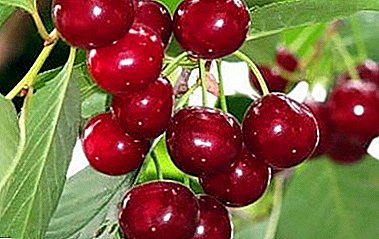 On dark spots, leaf drying and kidney death are determined main diseases of cherry:
On dark spots, leaf drying and kidney death are determined main diseases of cherry:- gray rot;
- perforated spotting;
- cocmmycosis;
- monilioz;
- gum treatment.
Important: 5-7% solution of ferrous sulfate is not only a treatment for fungal diseases, but also an increase in new branches and fruit buds!
Fruit use
The canning industry has largely alleviated the plight of gardeners, perplexed by the problem of processing a bountiful harvest. But the preparation of compotes, juices, homemade liqueurs is still relevant.
From cherry-cherry fruit can be prepared:
- quick freezing for filling pies and dumplings, cooking desserts;
- cherry sauce for meat dishes;
- dried cherries for salads and compotes;
- marinated cherries as an addition to meat dishes;
- cherry jam with or without stones;
- confiture;
- jam;
- marmalade;
- cherry sherbet;
- sterilized cherries without sugar.
 As such, the season of consumption of useful berries will last until the next harvest.
As such, the season of consumption of useful berries will last until the next harvest.
The virtues of cherry cherries as grades-dukes make the “Toy” especially in demand for country gardening, because every lover will be pleased with large, presentational berries, and even with such a yield of trees.
These fruits are not afraid of transportation, are well stored in processed form and can give everyone a joyful feeling of summer in the harsh winter period.
Among the universal varieties should pay attention to the same age, Volochaevka and Lighthouse.
Watch the video on which you will see the cherry variety Toy:


 gray, like cherry, bark on the trunk and skeletal branches, which flakes slightly;
gray, like cherry, bark on the trunk and skeletal branches, which flakes slightly; good drought tolerance;
good drought tolerance; Crown pruning is carried out in order to:
Crown pruning is carried out in order to: On dark spots, leaf drying and kidney death are determined main diseases of cherry:
On dark spots, leaf drying and kidney death are determined main diseases of cherry: